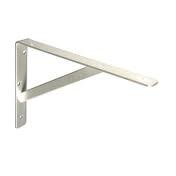If you local LED expert said 1W can get deeper than 3W then he really shouldn't call them "expert"
1w LED can never reach 1W in the sense of if you run it at max current, those LED will burn out lke very quickly. Same thing for 3W but 3W can run with a bit higher current and reach higher Wattage.
The distance that different light can travel depends on
1) The optic they using, the smaller the number the farther the light can reach.
2) When optic are the same, it depend on the light output of the single light source. IE: when 1W can reach about 0.6W~0.8W, 3w LED can reach 1.5W~2.8W depend on current running thru them. That alone has higher single point of output.
As far as for the PAR meter, I just purchased my PAR meter, I don't like to use the factory reading as I found most of the time they are somewhat misleading. I am only using them before as I had no other details. Now as I have my own PAR meter, I cna provide more accurate stats and that should help me provide better service to my client. I am even thinking getting a spectrometer. Those cost 7k~9K brand new, so I am waiting for one of my buddy to hook me up with some tech lab where they have used spectrometer. With those 2 equipments, I think I can better understand more about LEDs

